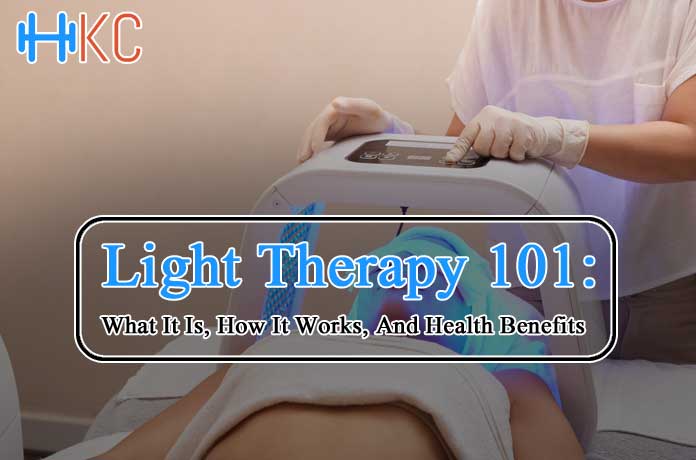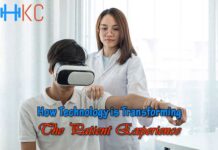Light therapy (sometimes called phototherapy) involves the exposure of your skin to certain wavelengths of ultraviolet light using polarized light or polychromatic light with a wavelength that is effective in treating the skin. It’s usually used as an adjunct therapy to other medical treatments. Here’s an overview of light therapy.
Although phototherapy was used in the treatment of jaundiced infants in 1960, it was already a known treatment for vitiligo in the 1940s. Today, the ailments treated by phototherapies include photoaging (from prolonged sun exposure), melasma, acne, eczema, psoriasis, wrinkles, and rosacea.
Light therapy is also used as a supporting treatment for ailments like arthritis, multiple sclerosis, stroke, and Parkinson’s disease. Light therapy is utilized to relieve pain associated with various diseases, such as migraine headaches and lower back pain.
If you plan to attend a light therapy session, you must see your doctor beforehand to make sure that you’re a good candidate. This can be done easily by scheduling an appointment with your family physician or dermatologist.
Types Of Light Therapy
Each type of light each have a positive effect on certain parts of the body. These three categories of light treatment are fairly common:
- Red and Near-Infrared Light: Red and NIR light therapies use wavelength-efficient lamps that are typically used in skincare to treat acne, psoriasis, and sunburns. These wavelengths are also effective in treating skin cancer, melasma, acne scarring, rosacea, and other pigmentation disorders.
- Blue Light: Blue light is used to treat a wide range of inflammatory conditions like severe acne, psoriasis, and sun damage.
- Green Light: Researchers continue to investigate the effects of green light on migraines.
How Does Light Therapy Work?
Light therapy works by shining wavelengths of ultraviolet (UV) light onto the open areas of the patient’s skin. These rays can be used either alone or in combination with other methods for improved health.
One way that the technology is implemented is by exposing patients to high levels of light for short periods. Typically, a technician will set up a device called a ‘light box’ or another gadget to administer the light therapy.
Most patients won’t see any visible effects from this exposure and those who do may only notice the benefits of improved skin tone or slight flushing of their face. Because of the low level of exposure needed to achieve the effects of this treatment, most offices use an analog reading device that measures the amount of light absorbed by the patient’s skin.
This type of treatment has become widely used in the medical industry for everything from headaches, sleep disorders, depression, and stress reduction, to heart disease and cancer. There are different types of light therapies and different areas in which they’re most effective.
For example, blue-light treatments are commonly used for treating minor ailments, such as sunburn. And red-light therapies are used when there is a problem with circulation or blood flow within the body. Many people also use ‘diode’ therapy for treating high levels of anxiety, and green light is sometimes used in conjunction with yellow or rose light to treat the SAD or seasonal affective disorder.
How Can Light Therapy Benefit Your Health?
Light therapy has many uses and benefits which you’ll find out here. Learn about the different ways light therapy is used to improve health and what health conditions it can help manage:
#1. To Improve Skin Conditions
Light therapy is frequently used to treat a variety of skin conditions like vitiligo, psoriasis, and eczema. It’s also used for aesthetic purposes such to reduce dark spots, wrinkles, age spots, and other signs of aging. Here’s how light therapy can help with skin problems like aging or sun damage and vitiligo:
- Vitiligo: Vitiligo is an incurable skin condition that causes the death of skin cells in the layer of skin called the epidermis. Because of this, vitiligo victims lose most, if not all of their skin. While it is impossible to know what causes a particular skin condition, experts have pointed to certain genes and environmental factors as possible causes. Light therapy, or phototherapy, is used to slow down or stop the progression of vitiligo.
- Aging skin: Doctors often use light therapy exposure in conjunction with photo-aging treatments to help reduce the appearance of fine lines and wrinkles caused by the aging process. By using light therapy to treat these issues, patients may experience reduced dark spots and age spots. Moreover, this therapy acts as a preventive intervention to age spots.
#2. To Manage Seasonal Affective Disorder
The benefits of light therapy aren’t limited to cosmetic enhancements. Some studies suggest that light therapy sessions may be an effective supplementary treatment for mood disorders. Patients suffering from depression, anxiety, or post-traumatic stress disorder may see a noticeable positive change in their moods and feelings after light therapy.
The seasonal affective disorder is a type of depression that can affect people all year round. It’s usually characterized by feelings of sadness, helplessness, hopelessness, and other feelings related to change. Symptoms of this condition include excessive worrying about the temperature, low energy levels, and excessive feelings of sadness. Many doctors use light therapy to help patients deal with the symptoms of this condition.
Light therapy helps to increase the amount of light reaching the retina, which improves the eyes’ ability to filter out bright and negative light. In addition to helping sufferers deal with the emotional symptoms of SAD, light therapy has also been shown to improve the condition of the brain responsible for the regulation of emotions.
#3. To Address Sleeping Disorders
Light therapy is quite effective in treating a range of different conditions. The most common visual improvement found was in people suffering from sleep disorders. In the past, when these disorders were not treated, patients often suffered from several unpleasant side effects, including nausea, vomiting, and headaches.
But after light therapy was introduced, patients found that they were able to sleep comfortably, with less nausea and headaches, and their overall mood improved. This may be because light therapy helps stimulate and manage the production of melatonin, a natural anti-depressant found in the body, and a hormone that helps you fall asleep.
#4. To Possibly Help Mitigate Symptoms Of Dementia
Dementia isn’t exactly a disease but an umbrella term encompassing many attributes of cognitive decline. Example scenarios are when one forgets why they went to one room from another, and when one has difficulty recalling a particular word. Additional cases in point are when a person is unable to make a decision about a trivial everyday-life matter, or when one no longer knows how to solve a problem they once didn’t have issues in tackling.
Light therapy is said to alleviate symptoms of dementia by resetting a person’s circadian rhythm. The so-called circadian rhythm, also known as the body clock, takes care of an individual’s sleeping and waking patterns. About 90 minutes of light therapy in as short as five days can help a person correct their rhythm, diminish insomnia, and in turn, decrease the manifestations of dementia. As of this writing, light therapy as a dementia solution is still in active research.
#5. To Decrease Chronic Pain
Another medical intervention currently inactive research is the efficacy of green light in relieving chronic pain. One example is migraines. Migraineurs (people suffering from migraines) often find solace in the comfort of darkness and silence whenever a migraine episode is raging. Little did they know that green light can possibly help them just the same.
On the other hand, red light is said to alleviate other types of chronic pain. These are arthritis, carpal tunnel syndrome, back pains, and joint pains.
Light Therapy Side Effects And Precautions
Light therapy is completely safe only when proper guidelines are followed. As with any form of treatment, there are some risks involved. You should discuss the risks and benefits of light therapy with your doctor or dermatologist before you begin. You may wish to find out more about the risks and benefits of light therapy treatment before starting anything. While there are no serious risks inherent, it’s possible to get headaches, feel nauseous, or become irritable.
If you have an underlying health condition, such as diabetes, elevated blood pressure, or a heart condition, you should avoid light therapy until such conditions are under control. Patients with bipolar disorder should take precautions when receiving light therapy treatment since it can promote hyperactivity, euphoria, or mania.
Takeaway
It’s best to see the advice of a health professional before seeking light therapy as a treatment for any health problem. Keep in mind that this is not a quick fix and should not be considered a cure even if some people report dramatic improvements in mood and other symptoms after a few sessions.
It’s important to note that what works for one person may not work for another. What is clear is that this particular form of therapy may provide some relief from symptoms that may be linked to serious medical issues, such as sleep disorders, SAD, and skin conditions. It’s worth your while to consult a physician to determine the right course of treatment for your health condition.
Google Search Terms:
- Light Therapy 101
- Light Therapy 101 Benefits
- Light Therapy 101 Side Effects
- How Does Light Therapy 101 Works
- Health Benefits of Light Therapy 101
















